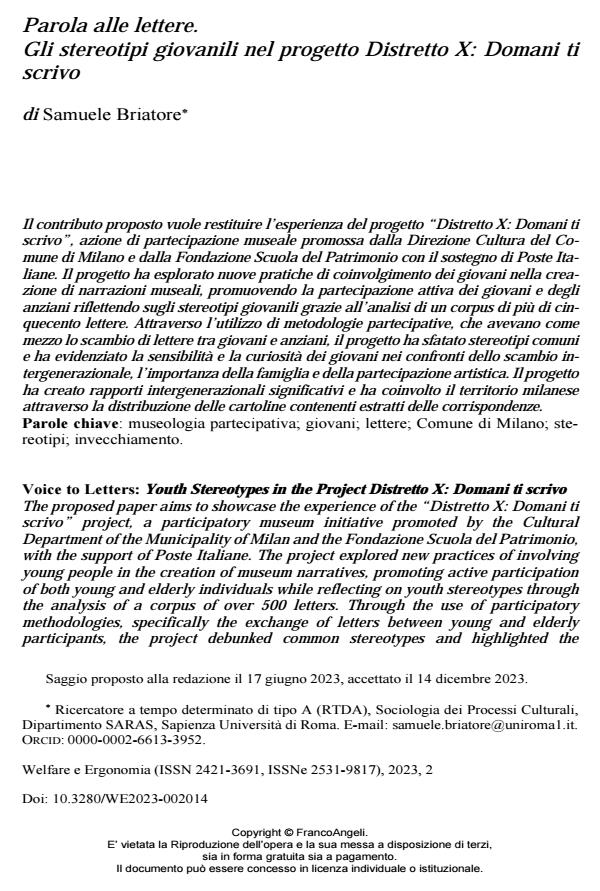Parola alle lettere. Gli stereotipi giovanili nel progetto Distretto X: Domani ti scrivo
Titolo Rivista WELFARE E ERGONOMIA
Autori/Curatori Samuele Briatore
Anno di pubblicazione 2024 Fascicolo 2023/2
Lingua Italiano Numero pagine 10 P. 205-214 Dimensione file 220 KB
DOI 10.3280/WE2023-002014
Il DOI è il codice a barre della proprietà intellettuale: per saperne di più
clicca qui
Qui sotto puoi vedere in anteprima la prima pagina di questo articolo.
Se questo articolo ti interessa, lo puoi acquistare (e scaricare in formato pdf) seguendo le facili indicazioni per acquistare il download credit. Acquista Download Credits per scaricare questo Articolo in formato PDF

FrancoAngeli è membro della Publishers International Linking Association, Inc (PILA)associazione indipendente e non profit per facilitare (attraverso i servizi tecnologici implementati da CrossRef.org) l’accesso degli studiosi ai contenuti digitali nelle pubblicazioni professionali e scientifiche
Il contributo proposto vuole restituire l’esperienza del progetto “Distretto X: Domani ti scrivo”, azione di partecipazione museale promossa dalla Direzio-ne Cultura del Comune di Milano e dalla Fondazione Scuola del Patrimonio con il sostegno di Poste Italiane. Il progetto ha esplorato nuove pratiche di coinvolgimento dei giovani nella creazione di narrazioni museali, promuo-vendo la partecipazione attiva dei giovani e degli anziani riflettendo sugli stereotipi giovanili grazie all’analisi di un corpus di più di cinquecento lettere. Attraverso l’utilizzo di metodologie partecipative, che avevano come mez-zo lo scambio di lettere tra giovani e anziani, il progetto ha sfatato stereotipi comuni e ha evidenziato la sensibilità e la curiosità dei giovani nei confronti dello scambio intergenerazionale, l’importanza della famiglia e della parteci-pazione artistica. Il progetto ha creato rapporti intergenerazionali significa-tivi e ha coinvolto il territorio milanese attraverso la distribuzione delle car-toline contenenti estratti delle corrispondenze.
Parole chiave:museologia partecipativa; giovani; lettere; Comune di Milano; stereotipi; invecchiamento.
Samuele Briatore, Parola alle lettere. Gli stereotipi giovanili nel progetto Distretto X: Domani ti scrivo in "WELFARE E ERGONOMIA" 2/2023, pp 205-214, DOI: 10.3280/WE2023-002014